Reviews
L’Enfant sauvage
François Truffaut
France, 1970
Credits
Review by Evan Kindley
Posted on 11 April 2010
Source MGM/UA DVD
In 1798 a boy of about twelve years old was discovered by a group of French sportsmen in a forest in the southern region of Aveyron. Naked and covered in scars, the child was unable to speak and seemed more like an animal than a human being, running on all fours and violently resisting any contact with others. “The Wild Boy of Aveyron” was a popular phenomenon in post-Revolutionary France, resonating deeply with Enlightenment philosophers’ speculations about the true nature of human society. “The wild boy will surely marvel at the wonders of Paris,” a newspaper item on the child’s discovery proclaims, but in fact he inhabits a very circumscribed world once he arrives in the city, confined to the National Institute for Deaf-Mutes, where Dr. Jean-Marc-Gaspard Itard - played, in Truffaut’s film, by the director himself - takes exclusive charge of his treatment. Recognizing that the boy is not actually deaf, Itard names him Victor because he’s sensitive to “O” sounds, and begins him on a regime of training designed to socialize him and teach him to express himself in language.
Itard’s methods, such as matching objects to their pictures to accustom Victor to the idea of correspondence, influenced those of later educational pioneers like Maria Montessori. But the education Victor receives also extends to the smallest components of everyday behavior: in the beginning, he has difficulty walking at a normal speed or focusing his gaze on particular objects; he is unable to establish a basic level of trust or comfort with another human being; and he prefers sleeping on the floor to a bed. Jean-Pierre Cargol’s performance as Victor is both passionate and finely calibrated, testifying once again to Truffaut’s great skill in directing young children. While called upon to grimace, jerk his head back and forth, scurry, and squirm, Cargol nonetheless maintains an odd kind of composure, registering the extreme confusion Victor must feel at almost every moment without violating the film’s basic placidity. His reserve in certain scenes is difficult to interpret: is he genuinely interested in learning the lessons Itard sets for him, or is it that he knows he’s a captive, and that struggling beyond a certain point is clearly useless?
At times you sense Itard’s impatience with the extreme slowness of his pupil: his ambitions are large, wanting not only to teach Victor “to look and to listen” but also to understand that “language is also music.” In short, Itard wants not just to socialize but to cultivate Victor, to raise him to the level of a bourgeois gentilhomme of the late eighteenth century. While we do see some change in Victor over the course of the film - his movements get more controlled and his gaze steadier as learns to focus on one thing at a time - it’s far from the dramatic transformation Itard seems to hope for.
The Wild Child was Truffaut’s first film with premier Spanish cinematographer Néstor Almendros, marking the beginning of a collaboration that would continue until the end of the director’s life. Together they craft a look that is both uniquely appropriate for this film and, in moving away from the slicker, more Hitchcockian style of Truffaut’s previous films, a harbinger of things to come. After an opening sequence depicting Victor’s capture that revives techniques of early silent cinema like the iris shot (perhaps because the child lives in a pre-linguistic and therefore “silent” state), they shift into a pastoral naturalism close to that of the films Almendros shot for Eric Rohmer around the same time. (It also marked a brief return to Truffaut’s beloved black-and-white, a medium well suited to the reduced, constrained world Victor finds himself in.) Truffaut had spent much of the sixties exploring Hollywood genre conventions in one way or another, but The Wild Child takes a different approach, coming as close as Truffaut ever would to documentary. There is a very sparing use of music (by Antonio Vivaldi) and not much camera movement by Truffaut’s standards. Itard narrates Victor’s education in the form of journal entries (indeed, without these scenes of writing, he would be almost as silent as Victor). Fittingly for a film adapted from a medical case history, The Wild Child adopts a rather clinical style, much of which is imposed through editing: scenes tend to be very short and simple, and the film as a whole has a repetitive and reiterative logic, rather than the progressive build-up of a more conventional narrative, that reflects the difficult process of learning something from scratch. But as with Werner Herzog’s similarly minimalist Enigma of Kaspar Hauser, made a few years later, there is enough inherent interest to the process of human socialization to eliminate the need for complex plotting or ostentatious technique. (Both films are recommended for beginning speakers of French and German: there’s lots of pointing to and naming of objects, and plenty of helpful repetition.)
The Wild Child is often seen as a kind of companion piece to The 400 Blows, a second reflection on Truffaut’s own experience of childhood neglect, as well as on his early mentorship of Jean-Pierre Léaud (with whom Cargol shares a first name, and to whom the film is dedicated). This is no doubt true, just as the presence of Truffaut himself in nearly every frame, instructing the boy and sometimes even physically manipulating his body, inevitably leads one to think of the film as a meditation on the act of directing itself. Truffaut’s performance is very restrained, setting the template for his more famous turn in as Ferrand, the film director in Day for Night: like Ferrand, Itard spends much of the film with furrowed brow, only occasionally allowing himself to be distracted from his work for long enough to be either pleased or despairing about his progress. Itard’s work with Victor is just that - work - and it seems to engage him totally, leaving him no time or energy to enjoy the culture he’s so determined to bestow upon his charge.
The film was also, to some degree, a conservative reaction to the student rebellions of May 1968, a context Truffaut himself pointed out in a 1975 interview with Gilbert Adair:
I made L’Enfant Sauvage at a time when many young people, hardly older than the child in my film, were throwing off their culture, and their clothes, and practically going to live in the forest!… L’Enfant Sauvage depicted a creature desirous of acquiring an identity—and that he desired it, I truly believe.1
While Truffaut is emphatic here about Victor’s desire to acquire not only an identity but a culture, the fact remains that Victor’s desires, unlike those of the students involved in the events of May 1968, have to be taken as a matter of belief: there’s no knowing what he really wanted, since he in fact never attained a level of self-consciousness high enough to reflect on his unusual life story. (While Victor lived into his forties, he never attained the ability to speak French, or any other language, beyond a handful of simple words.) The Wild Child, to its credit, respects the inaccessibility of its protagonist, and refrains from using his life story to settle scores with either the past or the present. While Truffaut clearly admires and identifies with Dr. Itard, the film doesn’t heroize his civilizing efforts, just as it avoids idealizing Victor’s naive state; rather, it recognizes the narcissism of Itard’s enterprise along with its good intentions. At times Itard too finds himself attracted to the Romantic notion of Victor as a “child of nature” and wonders if his introduction into society doesn’t mean a “loss of freedom,” though he ultimately keeps faith with the Enlightenment project of rational education.
Though we may agree with Truffaut that he was better off in Paris than in the forest and that he truly desired to join human society, the horizons of the film are severely restricted, and it’s impossible not to feel sorry for Victor at times. “You turn his only pleasure into exercises,” Itard’s housekeeper Mme. Guérin chastises him, and it’s true that The Wild Child, in sticking so closely to Itard’s procedures, takes on the dutiful quality of an academic exercise, a deliberate reining in of the lyrical excesses associated with the name of its director. The sole exception occurs in a sequence toward the end of the film in which Victor flees the institute, tries to steal a hen from a neighboring property, and finally returns, unable or unwilling to fend for himself any longer outside society. While the possibility of escape may have briefly brought us back to the world of The 400 Blows - and Cargol’s last look to the camera matches Léaud’s in that film - Itard’s final line reflects a very different concept of the future: “Tomorrow we’ll resume our lessons.”
- _Interviews_, ed. Ronald Bergan, 97. ↩
More Love on the Run: The Films of François Truffaut
-

Les Mistons
1957 -
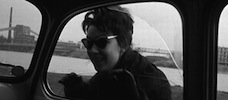
Une histoire d’eau
1958 -
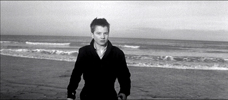
The 400 Blows
1959 -
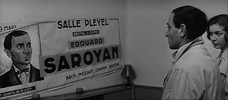
Shoot the Piano Player
1960 -
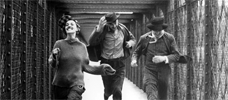
Jules and Jim
1962 -
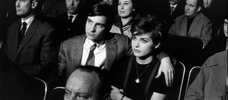
Antoine and Colette
1962 -
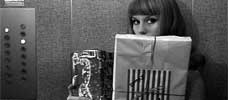
The Soft Skin
1964 -
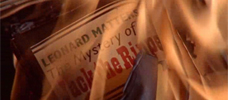
Fahrenheit 451
1966 -
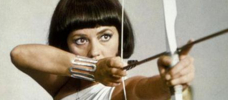
The Bride Wore Black
1968 -
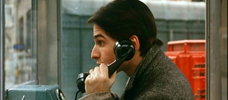
Stolen Kisses
1968 -
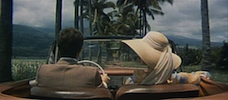
Mississippi Mermaid
1969 -
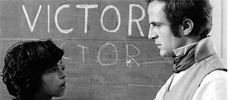
The Wild Child
1970 -
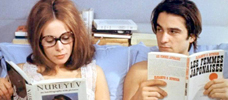
Bed and Board
1970 -
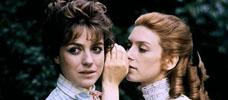
Two English Girls
1971 -
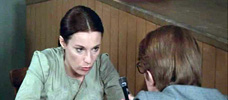
Such A Gorgeous Kid Like Me
1972 -
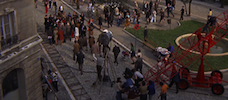
Day for Night
1973 -
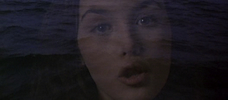
The Story of Adele H.
1975 -
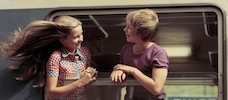
Small Change
1976 -
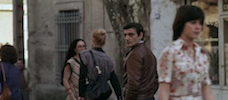
The Man Who Loved Women
1977 -
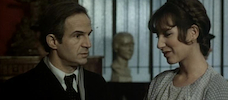
The Green Room
1978 -
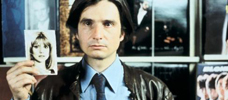
Love on the Run
1979 -
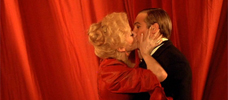
The Last Metro
1980 -
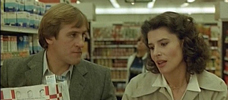
The Woman Next Door
1981 -
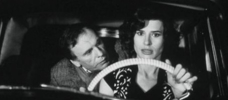
Confidentially Yours!
1983
We don’t do comments anymore, but you may contact us here or find us on Twitter or Facebook.



